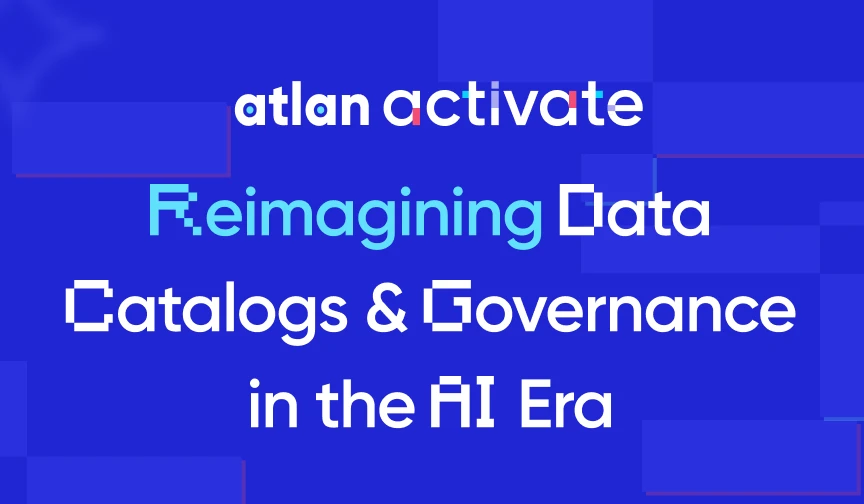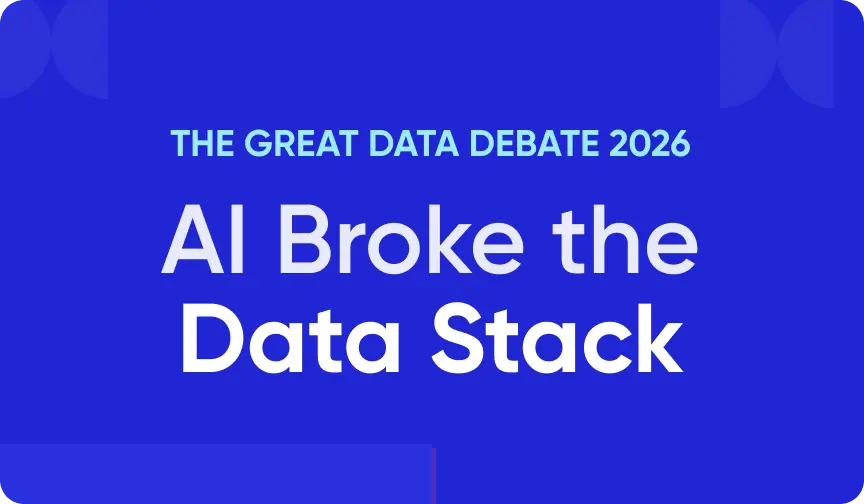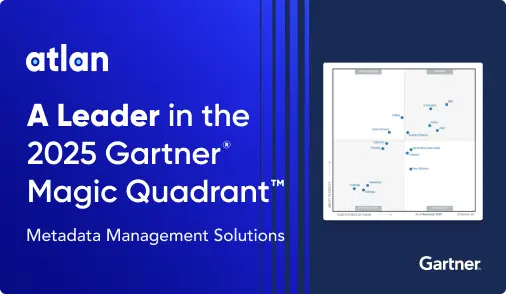What Is PII Data Discovery Software & How Does It Drive Compliance? Your 2025 Guide

Last Updated on: July 08th, 2025 | 9 min read
Unlock Your Data's Potential With Atlan

Quick Answer: What is PII discovery software?
Permalink to “Quick Answer: What is PII discovery software?”PII data discovery software helps organizations automatically detect, classify, and map personally identifiable information (PII) across structured and unstructured data systems.
This helps data teams gain greater visibility into sensitive data, apply appropriate security controls and policies, and support compliance, privacy, and ethical data use.
Up next, we’ll explore how PII data discovery works, key components of PII data discovery platforms, and the role of metadata in turning discovery into a continuous, scalable, audit-ready process.
Table of Contents
Permalink to “Table of Contents”- PII discovery software explained
- What are the key aspects of PII data discovery software?
- What are the prerequisites for PII data discovery?
- What role does a metadata control plane play in PII data discovery
- PII discovery software: Summing up
- PII discovery software: Frequently asked questions (FAQs)
PII discovery software explained
Permalink to “PII discovery software explained”Summarize and analyze this article with 👉 🔮 Google AI Mode or 💬 ChatGPT or 🔍 Perplexity or 🤖 Claude or 🐦 Grok (X) .
PII data discovery software uses pattern recognition, metadata scanning, machine learning, and contextual rules to identify sensitive data across your organization’s data estate.
This includes information like names, addresses, social security numbers, phone numbers, account credentials, and biometric data—anything that can be used to identify an individual.
By automating the identification of sensitive fields, PII data discovery software platforms reduce the risk of data breaches and regulatory violations. They also support requirements under regulations like GDPR, HIPAA, and CCPA by making it easier to locate, protect, and manage PII.
“You can use sensitive data discovery and classification to secure sensitive data with appropriate controls and policies; support compliance, privacy, and ethical data use; and inform and enrich asset management inventory and governance practices.” - Forrester on the role of sensitive data discovery tools for data teams
Why do you need PII data discovery?
Permalink to “Why do you need PII data discovery?”Organizations today operate in highly regulated environments and process increasing volumes of sensitive data. Without visibility into where PII resides, data privacy becomes unmanageable.
PII discovery software addresses key challenges, such as:
- Scattered PII across hybrid and multi-cloud environments
- Inconsistent data tagging and metadata hygiene
- Difficulty identifying shadow data and improperly masked assets
- Inability to respond quickly to data subject access requests (DSARs)
- Risk of regulatory fines, reputation damage, or customer churn
When done right, PII discovery lays the foundation for:
- Complying with privacy regulations (GDPR, HIPAA, CCPA, LGPD)
- Enforcing data protection policies
- Managing consent and retention policies
- Building trust in your data as well as with customers and regulators
Here’s how Daniel Dowdy, Vice President, Data Analytics & Governance at North–a payment services provider–highlights the business value of data discovery:
“The way I keep thinking about it was the early days of the internet. You had access to this vast amount of information, but it was really hard to find. Then, search engines made it easy to run a search and find relevant content.”
Extending Dowdy’s analogy, data discovery software platforms are like Google for data.
What are the key aspects of PII data discovery software?
Permalink to “What are the key aspects of PII data discovery software?”Modern PII data discovery software goes beyond simple pattern matching. The most effective platforms offer a comprehensive set of capabilities that support privacy, security, and compliance initiatives at scale.
Key aspects include:
- Google-like search for data and metadata: Quickly locate PII across your data estate using natural language or advanced queries. This makes discovery accessible to non-technical users and accelerates compliance audits.
- Automated profiling: Automatically scan datasets to understand their structure, content, and sensitivity—detecting PII fields like names, emails, IDs, and financial information without manual intervention.
- 360-degree visibility of data assets: View where sensitive data resides, how it flows across systems, who owns it, and how it’s being used. This enables full traceability and accountability.
- Contextual discussions: Collaborate across security, governance, legal, and engineering teams with built-in comment threads, annotations, and documentation linked to each data asset.
- Granular access controls: Apply persona-, domain-, purpose- or tag-based permissions to regulate access to sensitive PII. This helps enforce least privilege principles and meet regulatory requirements for data protection.
- Auto-tagging and propagation: Classify PII fields based on pre-defined rules or AI-based detection, and propagate tags downstream to automate enforcement of privacy and access policies.
- Dashboards and alerting: Monitor the state of PII across systems, receive real-time alerts for policy violations or misconfigurations, and track resolution progress from a centralized interface.
What are the prerequisites for PII data discovery?
Permalink to “What are the prerequisites for PII data discovery?”Before automating PII discovery, organizations must:
- Define what constitutes PII in their business and regulatory context
- Identify where sensitive data might live—including shadow environments
- Align stakeholders on tagging, classification, and escalation processes
- Integrate discovery with governance, risk, and compliance systems
- Establish thresholds for risk levels and data handling
This groundwork ensures discovery efforts are consistent, actionable, and aligned with broader privacy programs.
What role does a metadata control plane play in PII data discovery
Permalink to “What role does a metadata control plane play in PII data discovery”Gartner explains how, even though automation is key to data discovery at scale, the ability of an automated data discovery platform to read, interpret, and act upon data is crucial.
This ability depends on one thing: metadata.
Metadata—information about your data’s structure, lineage, sensitivity, and usage—is what powers discovery. Without it, automated PII identification becomes guesswork. But with active, rich metadata, you can not only identify sensitive fields, but also understand where they originated, how they’re transformed, who’s using them, and why they exist.
As Gu Xie, Head of Data Engineering at Group 1001, puts it:
“The true technical debt that weighs on every single data team is a lack of effective metadata handling.”
In modern data stacks, where sensitive fields can live in warehouse tables, reports, dashboards, and downstream systems, that debt compounds quickly.
When stakeholders ask basic questions—“Where is this customer name coming from?” or “Is this field subject to GDPR?”—answering them often means manually tracing lineage across silos, which can consume 80% of a data team’s time.
That’s where a metadata control plane like Atlan can help.
A metadata control plane acts as a connective layer across the data ecosystem, continuously capturing, enriching, and activating metadata. In the context of PII discovery, this enables:
- Continuous, automated discovery of sensitive information as it enters new systems or changes location.
- Tag propagation via lineage, ensuring that once a PII field is tagged, it remains tagged downstream—across transformations, joins, and pipelines.
- Context-rich visibility into who owns the data, how it’s used, and whether policies are being followed.
- Policy enforcement at scale, such as auto-flagging PII exposures or blocking access to sensitive fields based on user roles or data classification.
- Audit-ready traceability, showing how each PII field evolved and who interacted with it.
Also, read → A single source of truth for data discovery
How North improved data discovery and visibility of its 225,000-asset data estate
Permalink to “How North improved data discovery and visibility of its 225,000-asset data estate”Payment solutions provider North wanted to improve data discovery by connecting over 225,000 data assets within Snowflake and Sigma using Atlan. Before Atlan, data discovery at North was a chaotic experience of jumping through multiple silos.
Within hours of getting started with Atlan, North managed to transform data discovery, making it simple to navigate and understand their data estate.
“After partnering with Atlan, it took probably a couple of hours before we were integrated with Snowflake and Sigma, connecting to over 225,000 assets. We’re so happy with the results.” - Daniel Dowdy, VP of Data Analytics & Governance at North
How Group 1001 improved productivity and clarity with Atlan
Permalink to “How Group 1001 improved productivity and clarity with Atlan”Insurance holding company Group 1001 chose Atlan because it enables data collaboration between engineering, analysts, and business teams.
Before Atlan, data discovery was more of an archaeological exercise. With Atlan, these “excavations” are a thing of the past.
With Atlan, analysts can see their online data sets, trace the lineage and leverage it for business decisions. They can understand where a dataset has been, where it’s coming from, and get complete context.
Plus, Atlan integrates with communication tools like Slack, which embeds collaboration and makes it easier for data teams to communicate about data across the organization without hopping between tools.
PII discovery software: Summing up
Permalink to “PII discovery software: Summing up”PII data discovery software gives you the complete context of sensitive data: where it lives, how it flows, and whether it’s being handled safely. That level of understanding requires rich metadata, and to make that metadata usable at scale, you need a metadata control plane.
By pairing automated PII discovery with active metadata, a control plane like Atlan transforms PII protection from a compliance headache into a proactive, collaborative, and scalable practice.
PII discovery software: Frequently asked questions (FAQs)
Permalink to “PII discovery software: Frequently asked questions (FAQs)”1. What is PII data discovery software?
Permalink to “1. What is PII data discovery software?”PII data discovery software helps organizations automatically find, classify, and track personally identifiable information (PII) across structured and unstructured data sources. It supports compliance with privacy laws and helps reduce the risk of data breaches.
2. Why is PII discovery important for compliance?
Permalink to “2. Why is PII discovery important for compliance?”Privacy regulations like GDPR, CCPA, HIPAA, and others require organizations to protect PII, honor data subject rights, and maintain audit trails. Without automated discovery, it’s nearly impossible to identify all instances of sensitive data and ensure they’re governed properly.
3. What types of data qualify as PII?
Permalink to “3. What types of data qualify as PII?”PII includes any information that can identify an individual—such as names, social security numbers, email addresses, phone numbers, IP addresses, financial information, and biometrics. The definition may vary depending on the regulation.
4. How is automated PII discovery different from manual classification?
Permalink to “4. How is automated PII discovery different from manual classification?”Manual discovery is time-consuming and error-prone, especially in large or complex environments. Automated tools can scan thousands of tables, files, and reports quickly, applying consistent rules and minimizing human oversight.
5. How does a metadata control plane support PII discovery?
Permalink to “5. How does a metadata control plane support PII discovery?”A metadata control plane like Atlan continuously captures and enriches metadata—tracking lineage, ownership, classification, and usage. It activates that metadata to enforce policies, propagate PII tags downstream, and support audit readiness at scale.
6. How do I evaluate PII data discovery software platforms?
Permalink to “6. How do I evaluate PII data discovery software platforms?”Key features to look for in PII data discovery software platforms include:
- Automated classification and pattern recognition
- Integration with your data ecosystem
- Tagging and lineage tracking
- Granular access controls
- Real-time dashboards and alerts
- Scalability across cloud and hybrid environments
Share this article
Atlan is the next-generation platform for data and AI governance. It is a control plane that stitches together a business's disparate data infrastructure, cataloging and enriching data with business context and security.
PII discovery software: Related reads
Permalink to “PII discovery software: Related reads”- What is Data Governance? Our approach at Atlan
- Data Compliance Management in Financial Services
- Data Governance and GDPR: What You Need to Know in 2025
- Data Readiness for AI: 4 Fundamental Factors to Consider
- Data Classification and Tagging: How to Marie Kondo Your Data Catalog and Spark Joy
- Automated Data Governance: How Does It Help You Manage Access, Security & More at Scale?
- Enterprise Data Governance Basics, Strategy, Key Challenges, Benefits & Best Practices
- Data Governance in Banking: Benefits, Challenges, Capabilities
- Financial Data Governance: Strategies, Trends, Best Practices
- BCBS 239 Data Governance: What Banks Need to Know in 2025
- Financial Data Compliance Software: What Qualities Matter in 2025
- AI for Compliance Monitoring in Finance: Use Cases & Setup
- Unified Control Plane for Data: The Future of Data Cataloging





















